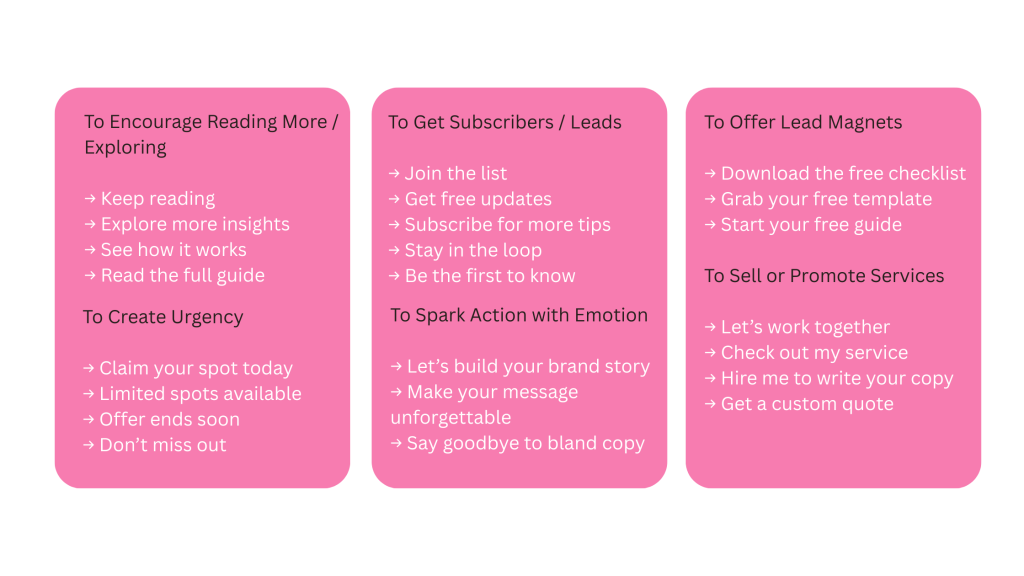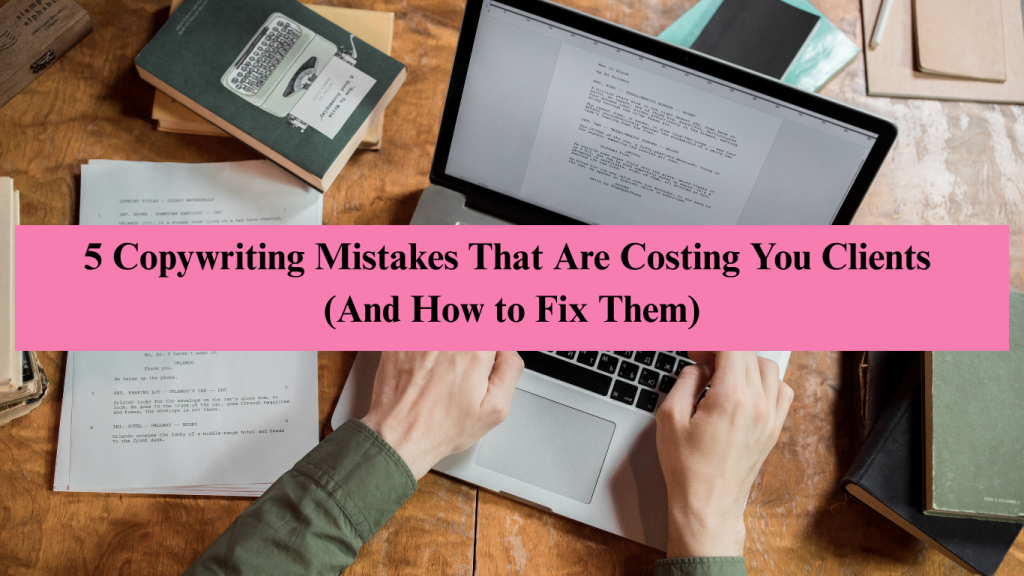Imagine your ideal client landing on your website, instantly feeling understood, and excited to connect with you. Now, imagine the opposite: they skim, scroll, and get confused, and leave without a second thought. The difference often lies in your words.
Sometimes copywriting feels overwhelming. I used to think copy means clever words! But what I learned from my mistakes is that copy is not about those fancy words.
It’s about making people feel something. A good copy speaks directly to the reader’s needs/desires and guides them to take relevant actions.
As a copywriter, I have reviewed many clients’ websites and sales pages, and I often spot some small or wrong word choices that can unintentionally turn potential clients away.
You may have great products and services, but your words are not doing their job! In this post, we’re diving into 5 common copywriting mistakes that are costing you clients and showing you exactly how to transform your words into powerful client-attracting tools.
Let’s dive in!
1. Writing to everyone (and reaching No One)
Using generic language rarely connects. Copy needs to solve problems, keeping the intent in mind. When writing for clients, specificity is crucial.
Focusing only on what you want to tell instead of what your audience wants to hear may go wrong.
Therefore, decide who you want to target. Their desires, needs, and solutions should always be at the heart of your copy.
For example,
Instead of saying, “We offer digital marketing services for businesses.”
You can say, “We help small business owners attract more clients through simple and stress-free digital marketing.”
Tip: Get clear on your ideal audience. Use language that speaks to their goals, problems, and mindset.
2. Features over Benefits
Features are what your product has. Benefits are what your customer gets from those features.
And clients don’t buy features, they buy outcomes. So, not differentiating features and benefits is a mistake.
You may have amazing services, innovative features, and an amazing product. But people do not care about features as you, as a provider, do. They want to know how this product will benefit them, solve their problem, or bring them joy.
Feature-focused tells what it is.
Benefit-focused tells what it does for the user.
For example, A skincare product:
Feature: Contains hyaluronic acid and vitamin C.
Benefit: Say hello to glowing skin that feels soft and looks refreshed all day.
How to make the shift from features to benefits and convert clients?
For every feature you identify, ask yourself, “What does that mean for my customer?” Keep asking until you get a positive outcome for them. Then reframe the copy with new messages/answers.
Tip: List the features and ask yourself, “So what?” Turn the answer into a benefit.
3. Weak Headlines
Your headline is the first and only chance to grab attention. If it’s unclear or dull, your reader won’t read further. As people are bombarded with too much information on digital platforms, they just scan and decide whether to click or scroll in the first few seconds.
If it’s generic or confusing, your amazing copy will not be noticed.
What makes a headline weak?
- Generic statements: “Learn More About Our Services”
- Feature-focused: “Our New Software Has X Feature.”
- Jargon-filled: Using industry slang or overly complex language
- Lacking urgency or curiosity: No reason for the reader to engage now or discover something new.
How to craft headlines that pack a punch: Be specific, highlight a clear benefit, and spark curiosity. Don’t settle for your first headline. Write 10–15 options, get feedback, and test if possible.
Tip: Use power words, numbers, and clear outcomes. Use Tools like CoSchedule Headline Analyzer.
4. Overcomplicating the Message
Copywriting aims for clarity. Every brand has its unique voice and tone. So, make it clever, clear, simple, yet aligned with the brand tone.
If you use jargon, buzzwords, or make your message overly complex, people will become confused and may develop trust issues. Making it conversational and to the point will help you achieve your copy goals.
Similarly, sounding too formal makes it difficult to connect. If you want your readers to buy, then connection is crucial. Keep it light, elegant, and friendly to reach the minds.
Example:
Overcomplicated (jargon-heavy):
“A real‑time collaboration platform for optimized cross‑departmental synergy.”
Slack’s simplified messaging:
“Where work happens”
Slack used simple and effective copy.

Image Source-IONOS
Tip: Use short sentences. Read your copy out loud. Pause and think, is it something you’d say in conversation? Simplify it. Talk to THEM!
“If you can’t explain it simply, you don’t understand it well enough.” — Albert Einstein
5. Skipping the Call-to-Action (CTA)
A call-to-action is a short message that tells readers to take specific actions. Though it’s small, but is the core and crucial element in your copy.
The CTA asks users to engage, explore, or buy according to the goals of the copy. So, a missing or weak CTA can break the conversation.
Take an example of Hubspot, it gives you two options in a single button-CTA. Start for free or get a demo.

More CTA Inspirations:

You can analyze or do A/B testing of your CTA on different landing pages and see what works best. Then optimize and use it again.
Don’t use the same message used by the competitors, as it may lack creativity and may not inspire readers to take action. Always try to make it unique, creative, and feel authentic.
Tip: Make your CTA action-oriented and benefit-focused. Don’t be afraid to repeat it more than once across your copy.
In closing
Copywriting is not just about typing words. It is a conversation on a page without meeting in person. We notice many copy that talks at people and not to them. Do you feel small mistakes in your copy can lead to big missed opportunities? And we don’t want it.
Just to be creative and sound more clever, we lose the real connection with readers. Additionally, making it generic, not targeting pain points, and writing without purpose are mistakes that must be avoided. Always remember, while writing copy, listen to your audience first, then speak with purpose, and then lead them somewhere.
Clear points to remember- Focus on clarity, benefits, strong headlines, targeted language, and bold CTAs to start turning readers into clients.
Want help turning your brand voice into clicks? Let’s chat.


